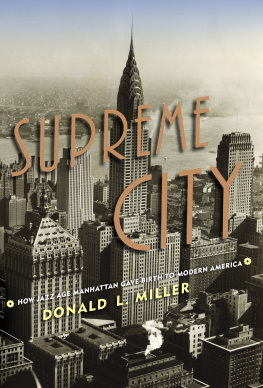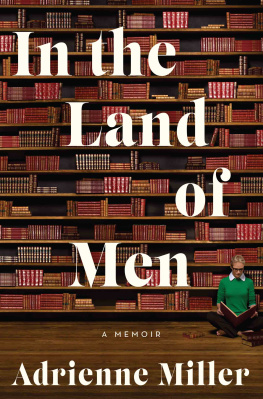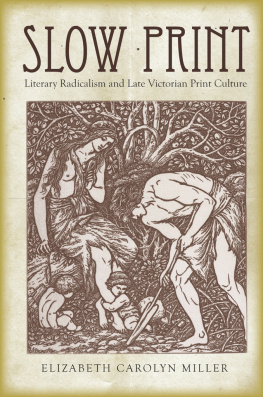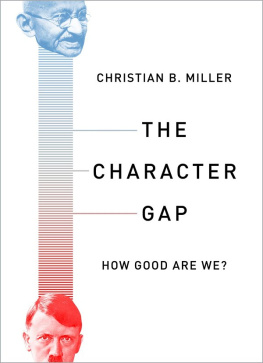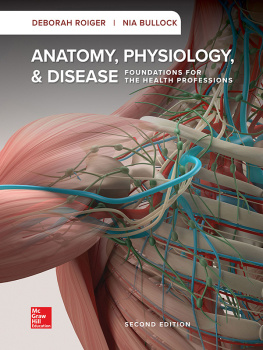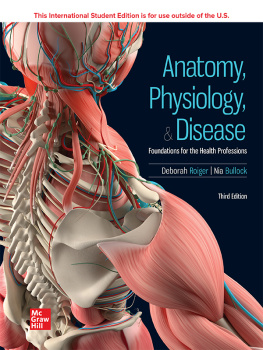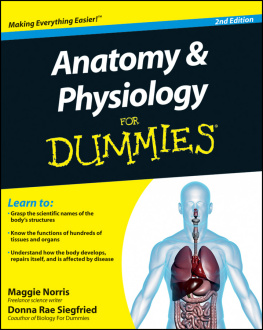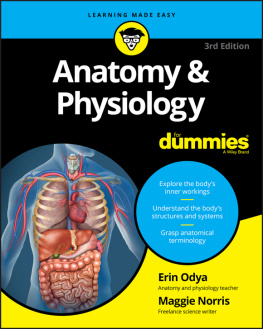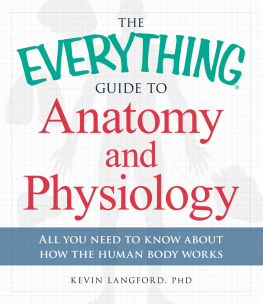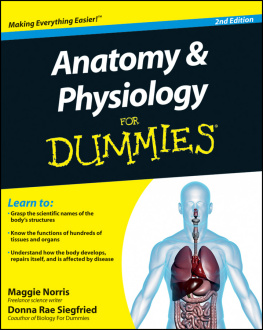Miller - Biology and Anatomy & Physiology Helps: Blood
Here you can read online Miller - Biology and Anatomy & Physiology Helps: Blood full text of the book (entire story) in english for free. Download pdf and epub, get meaning, cover and reviews about this ebook. year: 2013, genre: Home and family. Description of the work, (preface) as well as reviews are available. Best literature library LitArk.com created for fans of good reading and offers a wide selection of genres:
Romance novel
Science fiction
Adventure
Detective
Science
History
Home and family
Prose
Art
Politics
Computer
Non-fiction
Religion
Business
Children
Humor
Choose a favorite category and find really read worthwhile books. Enjoy immersion in the world of imagination, feel the emotions of the characters or learn something new for yourself, make an fascinating discovery.
- Book:Biology and Anatomy & Physiology Helps: Blood
- Author:
- Genre:
- Year:2013
- Rating:5 / 5
- Favourites:Add to favourites
- Your mark:
- 100
- 1
- 2
- 3
- 4
- 5
Biology and Anatomy & Physiology Helps: Blood: summary, description and annotation
We offer to read an annotation, description, summary or preface (depends on what the author of the book "Biology and Anatomy & Physiology Helps: Blood" wrote himself). If you haven't found the necessary information about the book — write in the comments, we will try to find it.
Biology and Anatomy & Physiology Helps: Blood — read online for free the complete book (whole text) full work
Below is the text of the book, divided by pages. System saving the place of the last page read, allows you to conveniently read the book "Biology and Anatomy & Physiology Helps: Blood" online for free, without having to search again every time where you left off. Put a bookmark, and you can go to the page where you finished reading at any time.
Font size:
Interval:
Bookmark:
Biologyand Anatomy & Physiology Helps:
Blood
ByCarolyn Miller
AllRights Reserved
2013 Carolyn Miller
Outsideof fair use, no part of this book may be reproduced or transmitted inany way without express permission of the author.
Coverart
byimage*after
availableat: http://www.imageafter.com/image.php?image=b5light_fx001.jpg
Dedication:
Thisbook is dedicated to My Sons.
Mayyou always be students in this wonderful, wide world.
Pleasenote thistext is designed to act as a lesson supplement .This text is not intended to provide a comprehensive review of thematerials covered without a full Biology or Anatomy & Physiologycurriculum to back it up. TheBiology and Anatomy & Physiology Helps series is designed to provide a review of the objectives andvocabulary covered by many instructors. This series is in note-likeformat to supplement any student study guide on the topic covered, and provides a selftest at the end of each text to help with material review.
TheBiology and Anatomy & Physiology Helps series also provides note taking tips as an aid to the student tofurther develop classroom and study skills.
Tableof Contents:
Notetaking helps are provided to aid the student in further developmentof study and classroom skills. The following abbreviations can helpyou increase your note taking speed in class and increase readabilityof notes at a later time.
~=approximately
=therefore
w/=with
w/o=without
b/c=because
#=numberor pounds
=increase
=decrease
+=positive
-=negative
==equals
>=greaterthan
<=lessthan
ex=example
excp=exception
or =yields
BiologyHelps:
NZ=enzyme
NG=energy
O =oxygen
CO =carbondioxide
C=carbon
Fe=iron
AA=aminoacid
H O=water
CT=connectivetissue
RBC=redblood cell
WBC=whiteblood cell
Hb=hemoglobin
=female
=male
1=primary
2=secondary
3=tertiary
4=quaternary
temp=temperature
Blood is the red liquid circulating in the arteries and veins of humans andother vertebrate animals:
carriesoxygen to and carbon dioxide from the tissues of the body.
theonly fluid tissue
containscellular an liquid elements
formedelements -living blood cells
buffycoat -consists of leukocytes and platelets which is <1% of whole blood
erythrocytes - (or red blood cells, RBC) 45% of whole blood and dedicated to thetransportation of respiratory gasses
mostdense portion of the blood
plasma -colorless fluid part of blood where corpuscles are suspended
55%of whole blood is plasma
leastdense portion of the blood
serum - plasma minus the clotting proteins
characteristics of blood:
pH -slightly alkaline (pH 7.35-7.45)
color -dependent on oxygenation
scarlet= oxygen rich
darkred to purple = oxygen poor
arterialblood -oxygenated blood in the circulatory system
foundin the lungs, left chambers of the heart and arteries
venousblood -deoxygenated blood
foundin the veins (exception: the pulmonary vein that returns to theheart after oxygenation occurs in the lungs)
Bloodis a specialized connectivetissue:
lackscollagen and elastin fibers
containsdissolved fibrous proteins which become visible as fibrin strandsduring clotting
volume,in adult humans :
males5 - 6 liters (1.5 gallons)
females4 -5 liters (1.2 gallons)
Whileblood performs a number of functions it is most involved in thedistribution and regulation of substances and protection of the body.
distribution :
deliveroxygen and nutrients to all body cells
transportmetabolic waste from cells
carbondioxide waste to lungs
nitrogenwaste to kidneys
transporthormones from endocrine organs to target organs
regulation :
maintainbody temperature
maintainpH acting as reservoir of bicarbonate ions and buffers
maintainfluid volume to support blood circulation
protection
preventblood loss through clotting
preventinfection with white blood cells and antibodies
plasma is a straw colored fluid in which portions of blood are suspended
90%water containing dissolved solutes:
nutrients
gasses
hormones
wastes
cellproducts
proteins
inorganicions or electrolytes
electrolytesoutnumber all solutes (ex. sodium ions and chlorine ions)
compositionvaries continuously as cells add and remove substances from theblood
albumin -asimple form of protein that acts as a carrier of molecules throughthe circulatory system
60%of plasma protein is albumin
animportant blood buffer
majorcontributor to osmotic pressure
globulin -a simple protein soluble in salt solution
thereare 3 principal subsets
Alpha( )and beta ( )
producedin the liver
transportproteins that bind to lipids, fat soluble vitamins and metalirons
gamma( )
plasmacells release these globulin antibodies during the immuneresponse
complementproteins -function to defend the body against infection,
clottingproteins -blood proteins, found in the plasma, part of the body's clottingresponse
structure
smallcell structure is biconcave disks (this shape increases the cell'soverall surface area), bound by plasma membrane
lackinga nucleus (or anucleate )and have essentially no organelles
lackmitochondria, therefore, erythrocytes do not costume the oxygen theycarry
function
transportrespiratory gasses
bagsof hemoglobin (Hb)
proteinthat functions in gas transport
makesRBC red
red heme pigment bis bound to a protein globin.
globin consists of 4 polypeptide chains, each one binding a ringlike( porphyrinring containing iron (Fe)) heme group.
transferrin
thetransport protein iron loosely binds to when transported in blood
productionof erythrocytes
hematopoiesis -blood cell formation
occursin red bone marrow
erythropoiesis -erythrocyte (RBC) production
ferritin and hemosiderin
bothare stored forms of iron
protein-ironcomplex
transferrin is taken up by forming RBCs
reticulocyte
animmature RBC
withouta nucleus having reticulated or granular appearance
containsreticulum or a network of clumped ribosomes
destructionof erythrocytes
RBClife span is ~120 days
becauseanucleate, RBCs cannot synthesize new proteins, grow or divide
Font size:
Interval:
Bookmark:
Similar books «Biology and Anatomy & Physiology Helps: Blood»
Look at similar books to Biology and Anatomy & Physiology Helps: Blood. We have selected literature similar in name and meaning in the hope of providing readers with more options to find new, interesting, not yet read works.
Discussion, reviews of the book Biology and Anatomy & Physiology Helps: Blood and just readers' own opinions. Leave your comments, write what you think about the work, its meaning or the main characters. Specify what exactly you liked and what you didn't like, and why you think so.



